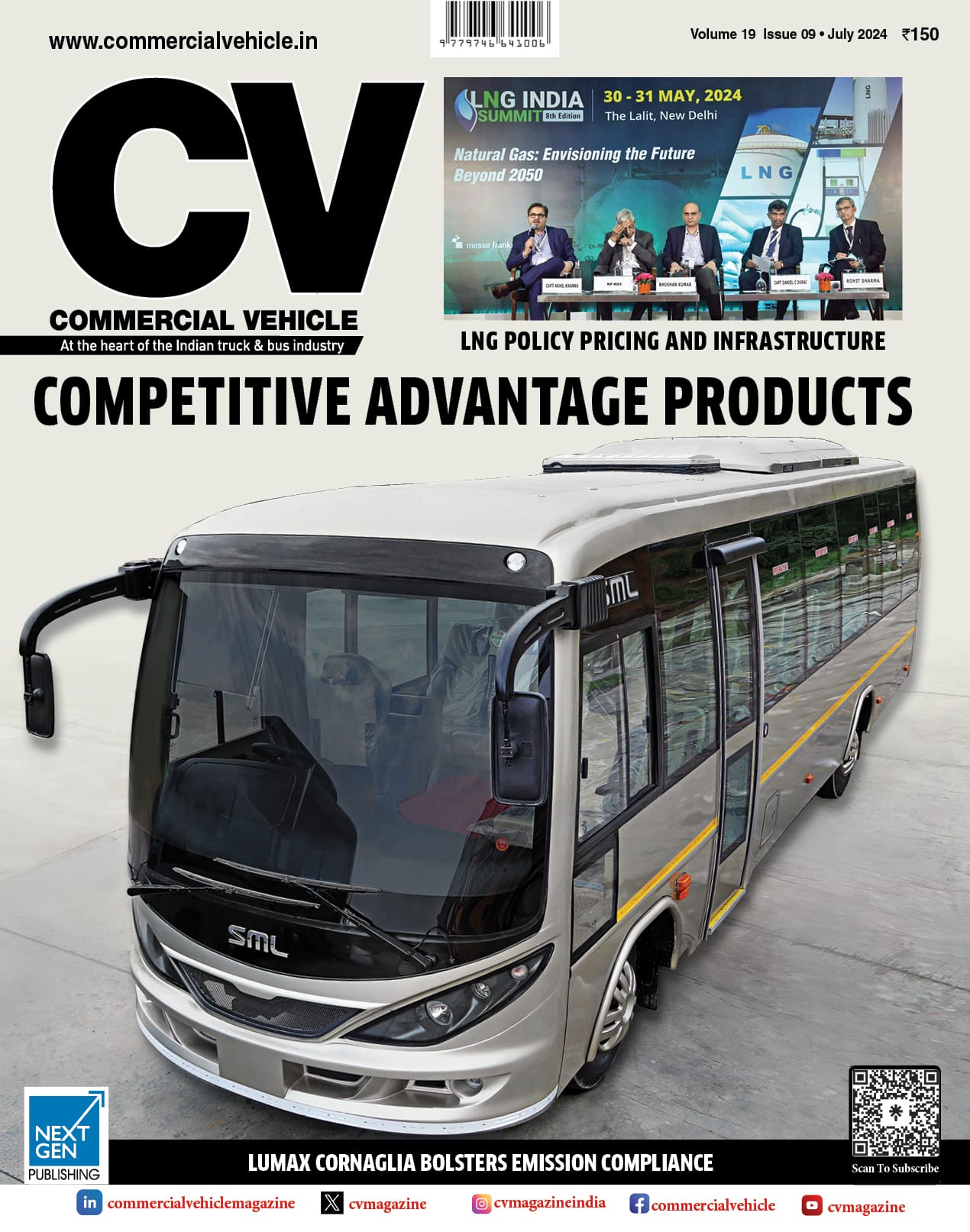Switch Mobility has created a stir with its EV launches globally. Ashish Bhatia weighs in on the products with the potential to turn into mass modes of transportation for India.
 Hinduja Group company Ashok Leyland Ltd. with its subsidiary Switch Mobility Ltd. is on a quest for transforming the mobility landscape. The subsidiary company of the world’s fourth largest bus manufacturer has laid out a road map to launch zero-emission products like electric buses and electric Light Commercial Vehicles (LCVs) at affordable price points. The focus is also on offering the lowest Total Cost of Ownership (TCO) in the Indian market with its commercial vehicle product range. Positioned as Ashok Leyland’s global arm for all green mobility solutions, the company’s road map has a clear focus on Battery Electric Vehicles (BEVs) in the product mix for the near-to-medium term. However, one can’t rule out the possibility of alternative green solutions to BEVs over the long-term either. In India, on a Year-To-Date (YTD) basis, the company has taken massive strides, in line as a testimony.
Hinduja Group company Ashok Leyland Ltd. with its subsidiary Switch Mobility Ltd. is on a quest for transforming the mobility landscape. The subsidiary company of the world’s fourth largest bus manufacturer has laid out a road map to launch zero-emission products like electric buses and electric Light Commercial Vehicles (LCVs) at affordable price points. The focus is also on offering the lowest Total Cost of Ownership (TCO) in the Indian market with its commercial vehicle product range. Positioned as Ashok Leyland’s global arm for all green mobility solutions, the company’s road map has a clear focus on Battery Electric Vehicles (BEVs) in the product mix for the near-to-medium term. However, one can’t rule out the possibility of alternative green solutions to BEVs over the long-term either. In India, on a Year-To-Date (YTD) basis, the company has taken massive strides, in line as a testimony.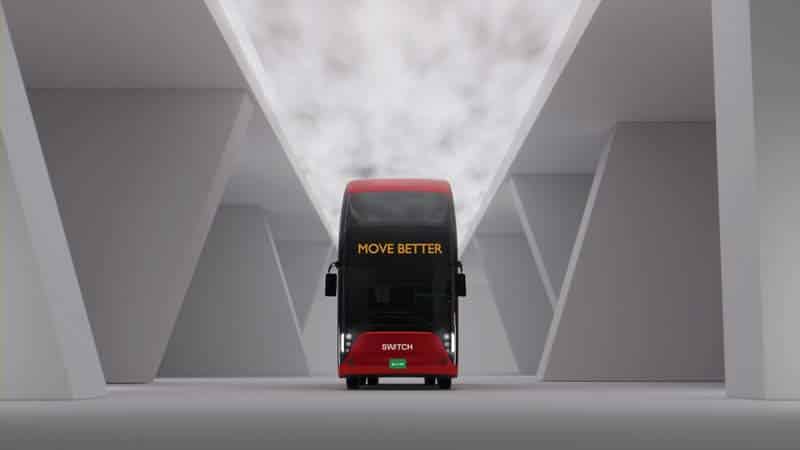
EiV 22 for India
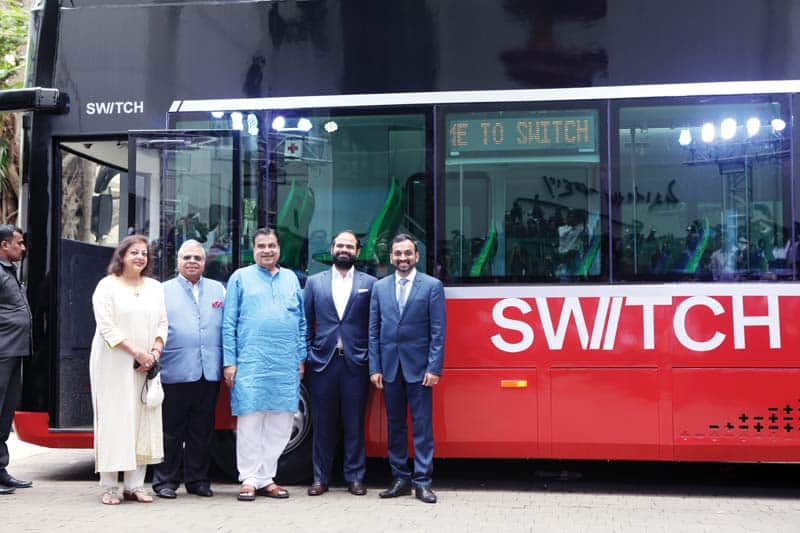 The EiV 22 is said to have been a pet project at the company. Following the inauguration of the Switch India Corporate Office in Chennai, the company followed through with the launch of the electric double-decker, EiV 22 in Mumbai, in August 2022. The company at the behest of stakeholders in both the Central and the State government is said to have found both adulation and support for its proven solutions, doing public transport duties globally. This support came especially from key stakeholders and decision-making figures like Union Transport Minister Nitin Gadkari. Having visited the company at its London facility, the Union Minister is said to have expressed a desire to have the buses ply in India, to the Hinduja Group and Mahesh Babu, Chief Executive Officer, Switch Mobility India and Chief Operating Officer at Switch Mobility Ltd. The decision to enter into a bilateral cooperation arrangement between the Transport for London (TfL) and the Indian Ministry of Road Transport and Highways (MoRTH) on a wide range of transport mobility solutions and associated activities in urban environments was taken during the same three-day official visit. It included the planning and delivery of mobility solutions including ticketing, passenger information, major project financing, infrastructure maintenance strategies and behavioural change and public transport promotion. Switch India took it up as a challenge and saw through the development cycle leading to the buses being inducted into the stage carrier, Brihanmumbai Electric Supply and Transport (BEST) Undertaking much to the delight of the Union Minister. Gadkari thanked the Hinduja Group and Team Switch for fulfilling the promise made to him in line with the Government’s larger vision. He expressed, “There is a need to transform the country’s transport system, looking from a long-term perspective. With a focus on reforming urban transport, we are trying to build a low carbon footprint and high passenger density integrated Electric Vehicle (EV) mobility ecosystem. With growing consumer demand for greener transport solutions, the Government’s vision and policies aim to encourage higher adoption of electric vehicles.” Ashok P. Hinduja, Chairman at Hinduja Group of Companies (India) hailed the introduction of the EiV 22 as the new era of electric and sustainable mobility solutions. He cited the efforts taken by the Union Minister, Niti Aaayog and Convergence Energy Services Ltd. terming them, forward-looking. Crediting BEST for being ahead of the curve, he reassured of the Hinduja Group’s commitment to green imperiality.
The EiV 22 is said to have been a pet project at the company. Following the inauguration of the Switch India Corporate Office in Chennai, the company followed through with the launch of the electric double-decker, EiV 22 in Mumbai, in August 2022. The company at the behest of stakeholders in both the Central and the State government is said to have found both adulation and support for its proven solutions, doing public transport duties globally. This support came especially from key stakeholders and decision-making figures like Union Transport Minister Nitin Gadkari. Having visited the company at its London facility, the Union Minister is said to have expressed a desire to have the buses ply in India, to the Hinduja Group and Mahesh Babu, Chief Executive Officer, Switch Mobility India and Chief Operating Officer at Switch Mobility Ltd. The decision to enter into a bilateral cooperation arrangement between the Transport for London (TfL) and the Indian Ministry of Road Transport and Highways (MoRTH) on a wide range of transport mobility solutions and associated activities in urban environments was taken during the same three-day official visit. It included the planning and delivery of mobility solutions including ticketing, passenger information, major project financing, infrastructure maintenance strategies and behavioural change and public transport promotion. Switch India took it up as a challenge and saw through the development cycle leading to the buses being inducted into the stage carrier, Brihanmumbai Electric Supply and Transport (BEST) Undertaking much to the delight of the Union Minister. Gadkari thanked the Hinduja Group and Team Switch for fulfilling the promise made to him in line with the Government’s larger vision. He expressed, “There is a need to transform the country’s transport system, looking from a long-term perspective. With a focus on reforming urban transport, we are trying to build a low carbon footprint and high passenger density integrated Electric Vehicle (EV) mobility ecosystem. With growing consumer demand for greener transport solutions, the Government’s vision and policies aim to encourage higher adoption of electric vehicles.” Ashok P. Hinduja, Chairman at Hinduja Group of Companies (India) hailed the introduction of the EiV 22 as the new era of electric and sustainable mobility solutions. He cited the efforts taken by the Union Minister, Niti Aaayog and Convergence Energy Services Ltd. terming them, forward-looking. Crediting BEST for being ahead of the curve, he reassured of the Hinduja Group’s commitment to green imperiality.

Drawing from the experience of successfully inducting a double-decker fleet into the Transport for London (Tfl) network, the company took upon the challenge of reviving Mumbai’s iconic double-decker bus in the electric guise. It launched the nine-metre, air-conditioned EiV 22 in a near frenzy, to coincide with the 75th Independence Day celebrations amidst much fanfare. The EiV 22 is built in keeping with the modern-day Indian operator and passenger aspirations. The company is contracted to deliver 200 ebuses to BEST Undertaking over the next year. Of these, 50 buses would be delivered by the third quarter of the current Financial Year (Q3-FY2023). The commercialisation, however, involves several processes including homologation by certifying agencies like ARAI and setting up of the charging infrastructure to name a few. The buses could be inducted earlier if the processes are fast-tracked with the backing of the government. The bus body, as per BEST officials, is being built by trusted partner Antony Garage Private Limited (AGPL) part of the Antony group known to have healthy relationships with customers, which includes State Transport Undertakings (STUs) like BEST, Navi Mumbai Municipal Transport (NMMT), Thane Municipal Transport (TMT) and others.
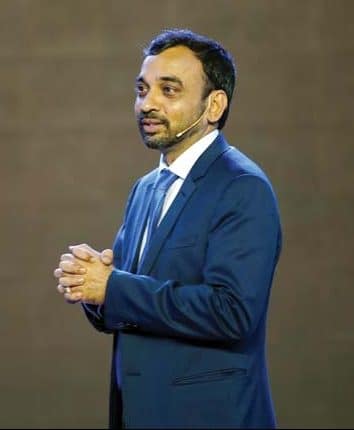
According to Babu, the EiV 22 is built on the same modular platform as the Switch EiV 12. The commercialisation of EiV 22 for Switch India is as momentous as it was many moons ago for the parent company Ashok Leyland. Back then, the latter pioneered the double-decker segment with the forward-controlled chassis fitted with a front-mounted engine. The popular Titan model was the base for future derivatives that are known to capture the imagination of generation after generation in the maximum city. It struck a chord with nearly four generations of commuters as a fair estimate. A testimony to the sentiments involved in the launch of the EiV 22! For us in the media, a trip to Ashok Leyland Towers, at Guindy, in Chennai is incomplete too without paying homage to the double-decker parked at the premise. It is reminiscent of the Original Equipment Manufacturer’s role in the city’s glorious past, a legacy that Switch India is hoping to build on and take to the next level.
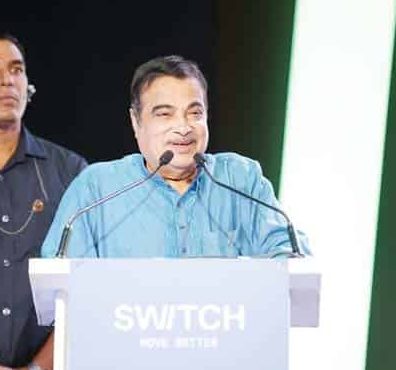
It’s also true that the maximum city grew in stature and found itself increasingly restrained by the rapid urban development. This led to the iconic double-decker nearing extinction with only a handful (~ 48 nearing end of life) plying in select pockets of the city. These will be gradually phased out by 2023 according to BEST officials, making room for the EiV 22 to take over the baton as an able substitute. The EiV 22 has been tweaked for the Indian market and marks a new chapter of public transportation in Mumbai. With it, Switch India, according to Babu is hoping to make public transportation in India more attractive than private modes of transport. According to a NITI Aayog and Boston Consulting Group joint study in 2018, India has ~1.2 buses per 1000 people, below developing nation benchmarks like 19 per cent in the U.K. where double-deckers are a popular choice. There is also a vast disparity between the adoption rate of states.
In U.K. with a single trip priced at pound sterling 1.65, commuters can also opt for weekly, monthly and annual passes besides opting for integrated multi-modal transport trips. This is among the reasons known to have contributed to the double-deckers being a popular mode of public transportation. In its agreement with BEST, the running cost of the EiV 22 has been optimised over the last one year on the energy utilisation and energy regeneration fronts. These will be especially higher in case of the double-decker. The company has also carefully worked out the battery pack size and number of chargers and charging cycle on its modular platform. A detailed study was carried out on the routes the bus will ply on including parameters like the brakethrough time. The agreement with BEST has the per kilometre running cost at Rs.56.4 per km after taking into account an Rs.66 lakh subsidy under the GCC model. Switch India plans to take the bus to other cities pan India too. It will also reach out to private bus fleet operators for their custom requirements in line with plans for deeper market penetration in the next phase of deployment.
EiV 22 Design and Architecture
The Switch EiV 22 has been designed, developed and manufactured in India from the Chennai plant with bodywork carried out in Mumbai. It is claimed to have been equipped with the latest technology, ultra-modern design, highest safety and best-in-class comfort features. Hailed as a significant achievement in terms of packaging, it is the world’s first semi-low floor, air-conditioned, electric double-decker bus in comparison to the low-floor Metrodecker EV suited to the U.K. It boasts of a wider door on the rear overhang and a rear staircase like in the yesteryear models but also makes room for a front ingress and egress in line compared to a front and central placement in the U.K. model of buses. Now that the engine is out, designers were able to make room for a staircase running behind the driver’s cockpit explained Babu,
The double-decker makes use of a lightweight aluminium body construction and claims to offer a higher passenger-to-weight ratio. This asserted Babu, has played a significant role in helping the company enhance the competitive cost per kilometre, per passenger. The Switch double-decker can ferry nearly twice the number of seated passengers as a comparable single-decker bus. With a largely 2×2 seating layout configuration, the bus can ferry 66 seated passengers including the pilot. This was achieved with only an 18 per cent rise in the kerb weight, he informed.
The styling is contemporary and interiors are designed to be feel-good, and roomier allowing for natural light to fall in through the all-around, generous glass work. The bus also features an emergency door complying with the latest safety standards. Compared to a heater in the U.K. counter part, in India, the air-conditioning duties are done by a JTAC HVAC unit installed at the rear interior panel of the bus. For example, there is an unit installed in the lower deck and controlled by the driver dash. It is selected to suit the hot climatic conditions to provide utmost passenger comfort. Seats are intentionally designed to use a lightweight cushion in contrast to global counterparts using a thicker cushion. The seat can be provided with optional USB charging ports. In the bus unveiled, the USB port was located underneath the seat which might make it inconvenient especially when the bus sets in motion. A few, front row seats were found to have seat belts too in a welcome move. This will please passengers seeking apt modifications to match the ongoing talks of a renewed focus on occupant safety. Ahead of the curve, Switch India is attempted interiors with car-like comfort to win customer patronage. Babu highlighted that the India specific bus occupy less road, terminal and depot floor space per seated passenger leading to a low carbon footprint replacing a stadium full of cars or offsetting 35 cars on the road.
During the tech walkthrough, he drew attention to the buses being 36 per cent efficient and offering 86 per cent higher carrying capacity than single-decker buses. This in effect would lead to 26 million litres of diesel saving and save 72-tonnes of CO2 emissions, he pointed out. He gave the example of Bengaluru where 70 per cent of the Switch buses run on Solar power-generated electricity to answer critics questioning the lack of clean power at source for EVs in India. “This is just the beginning,” he averred.
The architecture of the double-decker uses a 650 V system like in the Switch EiV 12 and the Switch e1. It draws power from a 231 kWh capacity, two-string, liquid-cooled, higher-density NMC chemistry battery pack with a dual gun charging system enabling a slow and fast charge (50-90 minutes). It is claimed to have a range of up to 250 km for intra-city applications on a single charge. The battery pack is located under the floor with special attention paid to lowering the Centre of Gravity (CG). This is claimed to have made the ride quality more stable in comparison to the earlier ICE generation of double-deckers that Mumbaikars rode in.
The company, stated Babu, is also taking along supplier partners that have helped it meet the FAME II compliance requirements. For instance, the company has leveraged the India parts ecosystem and synergies with companies like Dana, a tier1 supplier known for drivetrain and e-propulsion systems. In July 2021, the two signed a strategic agreement. Turning into a strategic investor in Switch Mobility, it became the preferred supplier for electric drivetrain components for the company’s e-bus and EV commercial vehicle offering. Dana provides e-axles, gearboxes, motors, inverters, software and controls, and electronics cooling.
EiV 12 for India
If one were to look at the chronology, the Switch EiV 12 will be hailed as the first step for the company in realising its affordable zero-emission mobility strategy in India. The 12m low floor standard intracity and tarmac variant were launched in Chennai, in June 2022. A testimony to the company’s capability to offer bespoke mobility solutions, the Battery Management System (BMS) is focused on energy density. The pack is claimed to be 30 per cent lighter and offers 4000 charge cycles enabling the company to offer an eight years warranty on the Li-Ion NMC pack. Modular batteries are said to increase the capacity per battery cell for the same weight. This translates to a higher range of kilometres. Up to 300 kms per day with a single charge, and up to 500 kms per day with dual gun fast charging. The electric drivetrains and batteries are calibrated to ensure superior efficiency with long battery life to deliver a lower TCO in the market.
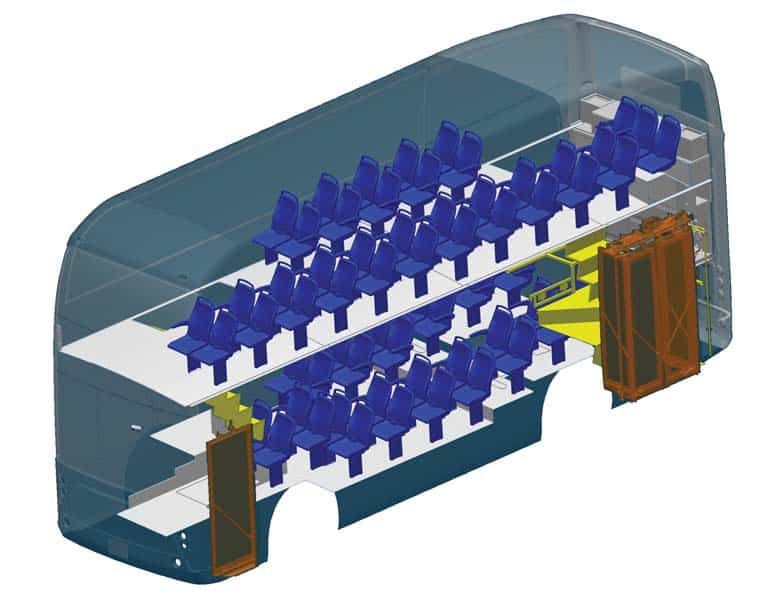
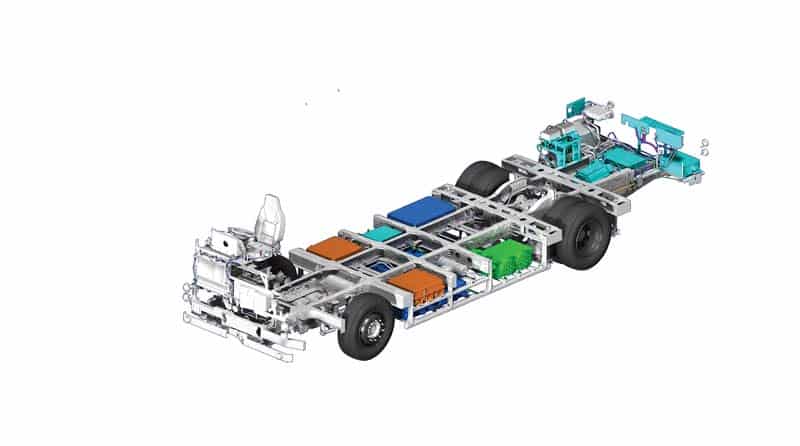 The bus fed off the bus segment’s revival post the two pandemic marred fiscals when the segment plummeted as a whole and was among the worst hit! The EiV 12 found first takers in Bengaluru Municipal Transport Corporation (BMTC) and is also learnt to have received interest from a leading airline for their ground fleet signalling an early market acceptance. For BMTC, the company flagged off 75 units of EiV 12 in August 2022 as part of a total order book of 300 units. In its earnings call, confirmed Hinduja, that the total order book for the company stood at 600 units (including 200 EiV 22 units). On participating in the tender process of public transportation at STUs, averred Dheeraj Hinduja, Chairman, Switch Mobility Ltd. that the company would pursue them but not at the cost of profitability. Most contracts signed by the company are on a Gross Cost Contract (GCC) model with up to a 10 to 12-year lease period wherein the company’s arm Ohm Global Mobility would capitalise the assets on the books and offer services to customers like BEST. “Ohm offers a pioneering full-suite of integrated vehicle services ranging from Mobility as a service (eMaaS), vehicle subscriptions, battery as a service and other value-added services,” explained Babu. The company offers OpEx-based, pay-per-km, high-tech mobility solutions.
The bus fed off the bus segment’s revival post the two pandemic marred fiscals when the segment plummeted as a whole and was among the worst hit! The EiV 12 found first takers in Bengaluru Municipal Transport Corporation (BMTC) and is also learnt to have received interest from a leading airline for their ground fleet signalling an early market acceptance. For BMTC, the company flagged off 75 units of EiV 12 in August 2022 as part of a total order book of 300 units. In its earnings call, confirmed Hinduja, that the total order book for the company stood at 600 units (including 200 EiV 22 units). On participating in the tender process of public transportation at STUs, averred Dheeraj Hinduja, Chairman, Switch Mobility Ltd. that the company would pursue them but not at the cost of profitability. Most contracts signed by the company are on a Gross Cost Contract (GCC) model with up to a 10 to 12-year lease period wherein the company’s arm Ohm Global Mobility would capitalise the assets on the books and offer services to customers like BEST. “Ohm offers a pioneering full-suite of integrated vehicle services ranging from Mobility as a service (eMaaS), vehicle subscriptions, battery as a service and other value-added services,” explained Babu. The company offers OpEx-based, pay-per-km, high-tech mobility solutions.
Participation in tenders
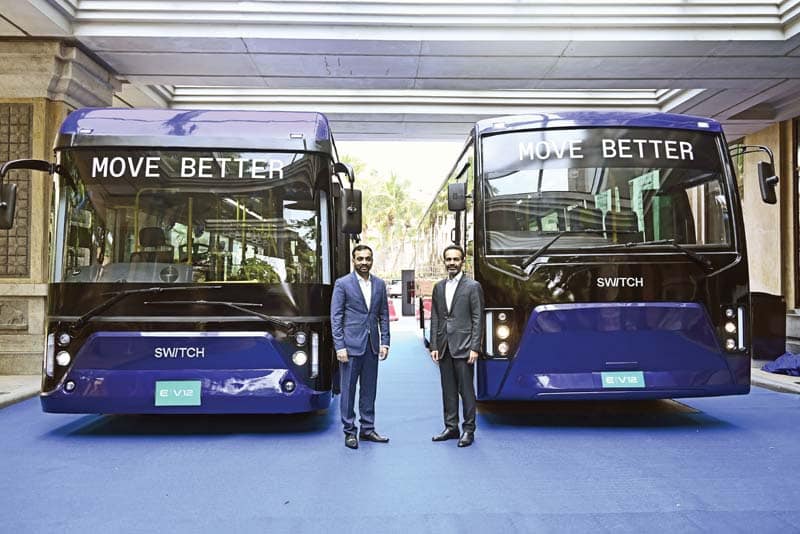 Dheeraj Hinduja, Chairman, Switch Mobility Ltd. asserted that the company would pursue them but not at the cost of profitability referring to aggressive bidding by OEMs in the case of bidding in the tendering process for STUs as one example. The company has also partnered with transport technology company Chalo. The two signed a Memorandum of Understanding (MoU) for an initial period of three years. Through a strategic collaboration, the two will deploy 5,000 state-of-the-art electric buses across India. The buses will be deployed across metros and other cities, which includes the initial deployment of variants of Switch EiV 12. Babu mentioned, “We aim to transform the urban mobility in the country by leveraging Chalo’s strong customer connect and operational expertise along with our technologically advanced electric vehicle products. This significant partnership of 5000 electric buses, will certainly open up access to affordable, comfortable, hassle-free and environmentally friendly transport solutions while enhancing the overall customer experience.’’ With a presence in over 40 cities, Chalo will in turn deploy its consumer technology solutions such as the Chalo App and the Chalo Card, offering conveniences such as live bus tracking, digital tickets, and travel plans. It will also facilitate route determination, frequency, schedules, and fares while Switch will account for the supply and maintenance of the electric buses. Going forward, he opined that Public Private Partnership (PPP) model would play a crucial role in buses. Here private players are expected to play a vital role.
Dheeraj Hinduja, Chairman, Switch Mobility Ltd. asserted that the company would pursue them but not at the cost of profitability referring to aggressive bidding by OEMs in the case of bidding in the tendering process for STUs as one example. The company has also partnered with transport technology company Chalo. The two signed a Memorandum of Understanding (MoU) for an initial period of three years. Through a strategic collaboration, the two will deploy 5,000 state-of-the-art electric buses across India. The buses will be deployed across metros and other cities, which includes the initial deployment of variants of Switch EiV 12. Babu mentioned, “We aim to transform the urban mobility in the country by leveraging Chalo’s strong customer connect and operational expertise along with our technologically advanced electric vehicle products. This significant partnership of 5000 electric buses, will certainly open up access to affordable, comfortable, hassle-free and environmentally friendly transport solutions while enhancing the overall customer experience.’’ With a presence in over 40 cities, Chalo will in turn deploy its consumer technology solutions such as the Chalo App and the Chalo Card, offering conveniences such as live bus tracking, digital tickets, and travel plans. It will also facilitate route determination, frequency, schedules, and fares while Switch will account for the supply and maintenance of the electric buses. Going forward, he opined that Public Private Partnership (PPP) model would play a crucial role in buses. Here private players are expected to play a vital role.
Not overnight
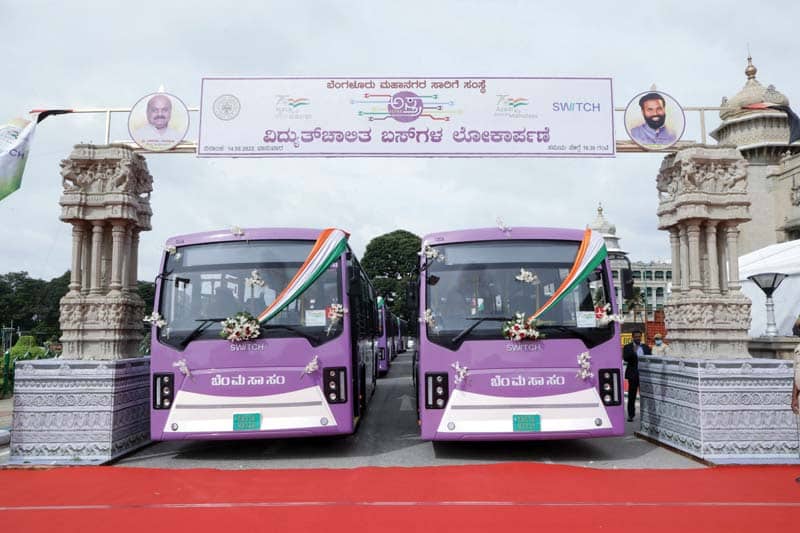 The company claims an uptime of over 98 per cent delivered consistently through the last few years with the current range of Switch EV buses in India. This is deemed as a testimony to the product’s performance in terms of reliability. The buses have clocked over eight million kilometres in India equivalent to saving over 5000 tonnes of CO2, and equivalent to planting more than 30,000 trees. Switch Mobility (Formerly Optare Plc), the Ashok Leyland subsidiary first secured its long-term growth when the parent company (Ashok Leyland), in July 2010, acquired a 26 per cent stake in the former. The deal back then was estimated to be valued at USD 7.5 million. Fast forward to 2017, the company raised its stake to 98.31 per cent. This was done through the conversion of loans into equity.
The company claims an uptime of over 98 per cent delivered consistently through the last few years with the current range of Switch EV buses in India. This is deemed as a testimony to the product’s performance in terms of reliability. The buses have clocked over eight million kilometres in India equivalent to saving over 5000 tonnes of CO2, and equivalent to planting more than 30,000 trees. Switch Mobility (Formerly Optare Plc), the Ashok Leyland subsidiary first secured its long-term growth when the parent company (Ashok Leyland), in July 2010, acquired a 26 per cent stake in the former. The deal back then was estimated to be valued at USD 7.5 million. Fast forward to 2017, the company raised its stake to 98.31 per cent. This was done through the conversion of loans into equity.
At that time around, they followed up a successful trial in York, with local operator First Leeds launching the trial of a new fully electric double-decker bus first unveiled in 2016. In 2018, the company further built on its aspirations to turn the subsidiary into a premier bus player in the U.K. At the same time, the company anticipated needs in overseas markets like Europe and India. In 2020, these aspirations led to the rebranding of Optare Plc as Switch Mobility Ltd. With its proven products like the Metrodecker EV, Metrocity for the U.K. market, and the recently launched Switch E1 for the European market in addition to the India-specific launches, the company has upped the ante. It has nine manufacturing facilities globally. The company also announced a new advanced manufacturing and technology centre in Valladolid, Spain. The company will utilise the global investment outlay to the tune of Pound sterling 300 mn. “Of the TIV of 44,000 buses in 2030, the company is looking at the opportunity presented by the EV adaption of 16,000 buses. It is expected to go only higher than projected at the going rate, concluded Babu.





